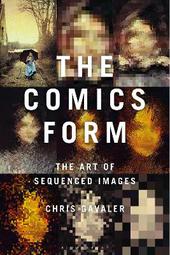
|
The Comics Form: The Art of Sequenced Images
Hardback
Main Details
Description
Answering foundational questions like "what is a comic" and "how do comics work" in original and imaginative ways, this book adapts established, formalist approaches to explaining the experience of reading comics. Taking stock of a multitude of case studies and examples, The Comics Form demonstrates that any object can be read as a comic so long as it displays a set of relevant formal features. Drawing from the worlds of art criticism and literary studies to put forward innovative new ways of thinking and talking about comics, this book challenges certain terminology and such theorizing terms as 'narrate' which have historically been employed somewhat loosely. In unpacking the way in which sequenced images work, The Comics Form introduces tools of analysis such as discourse and diegesis; details further qualities of visual representation such as resemblance, custom norms, style, simplification, exaggeration, style modes, transparency and specification, perspective and framing, focalization and ocularization; and applies formal art analysis to comics images. This book also examines the conclusions readers draw from the way certain images are presented and what they trigger, and offers clear definitions of the roles and features of text-narrators, image-narrators, and image-text narrators in both non-linguistic images and word-images.
Author Biography
Chris Gavaler is Associate Professor of English at Washington and Lee University, USA. He is also the author of On the Origina of Superheroes: From the Big Bang to Action Comics No. 1 (2015) and Superhero Comics (2017) and Creating Comics (2021), both publishing by Bloomsbury. Since 2021, he has been series editor of Bloomsbury Comics Studies.
ReviewsThe Comics Form is a thoughtful excavation of the definitions that are central to the study of comics and sequenced images. Exacting and clear, Chris Gavaler's book unpacks critical conversations about how the lines, panels, and pages of comics make meaning. The result is a significant and incredibly insightful contribution to the field of comics studies. * Qiana J. Whitted, Professor of English and African American Studies, University of South Carolina * Among the many strengths of Chris Gavaler's new book is the author's thoughtful and sometimes polemical engagement with existing scholarship, amounting to a valuable metacritical survey of the field. This is his starting point for a new framework of analysis that challenges assumptions about both the formal operations involved in an image-based, sequential art, and the inferencing processes demanded of readers. Like all good academic works, The Comics Form invites us to see things differently, and offers us a set of critical tools to aid our perception. * Dr. Ann Miller, University of Leicester *
|